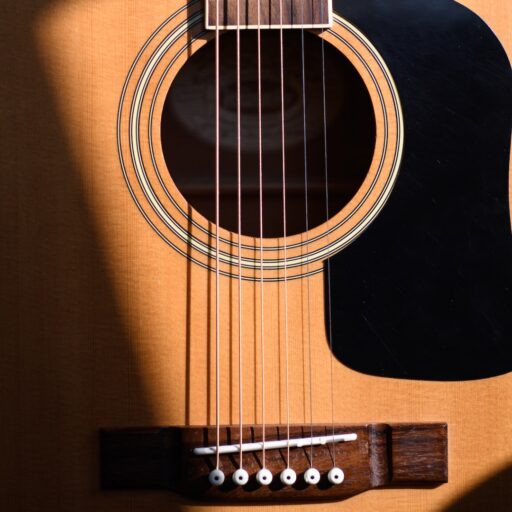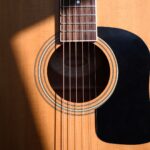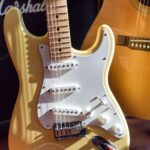Support our educational content for free when you purchase through links on our site. Learn more
🎸 15 Must-Know European Guitar Brands to Watch in 2025

When you think of legendary guitars, your mind might jump straight to American icons like Fender or Gibson. But hold on—Europe’s guitar scene is a treasure trove of craftsmanship, innovation, and unique tone that deserves a spotlight of its own. From the headless wonders of Sweden’s Strandberg to the reclaimed chestnut masterpieces crafted in Italy by Paoletti, European guitar brands blend centuries-old tradition with cutting-edge design. Did you know that Paul McCartney’s iconic bass was a German-made Höfner violin bass? That’s just the tip of the iceberg.
In this guide, we’ll take you on a whirlwind tour of the top 15 European guitar brands you absolutely need to know in 2025. Whether you’re a beginner hunting for budget-friendly gems like Vintage or Ortega, or a seasoned pro craving boutique excellence from Nik Huber or Ruokangas, we’ve got you covered. Plus, we’ll reveal insider tips on choosing the perfect guitar, highlight eco-friendly makers leading the sustainability charge, and explore the innovative designs reshaping how guitars feel and sound. Ready to discover your next dream guitar? Let’s dive in!
Key Takeaways
- Europe offers a diverse range of guitar brands, from affordable beginner models to high-end boutique masterpieces.
- Innovation is a hallmark, with brands like Vigier pioneering carbon fiber necks and Strandberg redefining ergonomics with headless, multi-scale designs.
- Unique tonewoods and voicing techniques give European guitars distinct voices you won’t find elsewhere.
- Sustainability matters: Many European makers lead in eco-friendly materials and processes, like Furch’s UV finishes and Paoletti’s reclaimed wood.
- Famous artists like Paul McCartney and Guthrie Govan have championed European brands, proving their global impact.
Ready to shop or learn more? Check out our curated selections of European electric guitars, acoustic guitars, and bass guitars to find your perfect match!
Table of Contents
- ⚡️ Quick Tips and Facts About European Guitar Brands
- 🎸 The Rich Heritage: History and Evolution of European Guitar Makers
- 1️⃣ Top 15 European Guitar Brands You Need to Know
- 2️⃣ Best Budget-Friendly European Guitar Brands for Beginners
- 3️⃣ Premium and Luxury European Guitar Brands: Where Art Meets Sound
- 🎨 Unique Body Styles and Designs in European Guitars
- 🎵 European Bass Guitar Brands That Rock the Low End
- 🔧 Craftsmanship Secrets: What Makes European Guitars Stand Out?
- 🎤 Famous European Guitarists and Their Signature Models
- 🌍 Sustainability and Eco-Friendly Practices in European Guitar Manufacturing
- 🎸 Custom and Boutique European Guitar Builders You Should Explore
- 🎧 Amplifiers and Effects: European Brands Complementing Your Guitar
- 🛠️ Maintenance Tips and Support for European Guitars
- 💡 Insider Buying Guide: How to Choose the Perfect European Guitar for You
- 🎁 Accessories and Add-ons from European Brands to Enhance Your Playing
- 📚 Recommended Links for Exploring European Guitar Brands Further
- 🔗 Reference Links and Sources
- 🏁 Conclusion: Why European Guitar Brands Deserve Your Attention
Here is the main body content for your comprehensive guide to European guitar brands.
⚡️ Quick Tips and Facts About European Guitar Brands
Alright, let’s dive right in! Before we embark on our grand tour of Europe’s finest luthiers, let’s get you armed with some quick-fire knowledge. Think of this as your sonic passport. Here at Guitar Brands™, we’ve spent countless hours with these instruments, and if you’re exploring beyond the usual American giants, you’re in for a treat. For those of you just starting your journey, our guide to the 🎸 Top 15 Electric Guitar Brands for Beginners (2025) Revealed! is a great place to start, but for now, let’s focus on the old continent.
European guitars aren’t just an alternative; they are a whole different world of tone, feel, and history. From the sun-drenched workshops of Spain to the high-tech precision of Germany, the diversity is staggering.
Quick Facts Table: European Guitars at a Glance
| Fact Category | The Lowdown |
|---|---|
| Historical Heart | The modern acoustic guitar’s ancestor, the Vihuela, and the Baroque guitar, originated in 16th-century Spain. ¡Gracias, España! |
| Tonewood Diversity | European makers often use local woods like Alpine Spruce, Flamed Maple from the Balkans, and even reclaimed woods like Italian Chestnut. |
| Innovation Hub | Europe is home to groundbreaking innovations like the carbon fiber neck reinforcement (Vigier’s 10/90 System) and headless, ergonomic designs (Strandberg). |
| Famous Adoptees | From Paul McCartney’s Höfner “Beatle Bass” to Mark Knopfler’s Pensa customs, European axes have shaped music history. |
| Craftsmanship Focus | Many European brands, especially in Germany and the Czech Republic, prioritize impeccable build quality and engineering over mass production. |
Here are a few more nuggets of wisdom we’ve picked up:
- ✅ Don’t assume “European” means “expensive.” While they boast some of the world’s most luxurious boutique brands, companies like Vintage (UK) and Ortega (Germany) offer incredible value.
- ✅ Look for regional specialties. Spanish brands like Alhambra and Camps excel at classical and flamenco guitars. German brands like Warwick and Sandberg are bass guitar titans.
- ❌ Don’t expect clones. Many European builders pride themselves on unique designs, electronics, and construction methods. They aren’t just making copies of American classics; they’re forging their own path.
So, why does a guitar from the Czech Republic feel and sound so different from one made in Northern Ireland? That, my friend, is the story we’re about to unravel.
🎸 The Rich Heritage: History and Evolution of European Guitar Makers
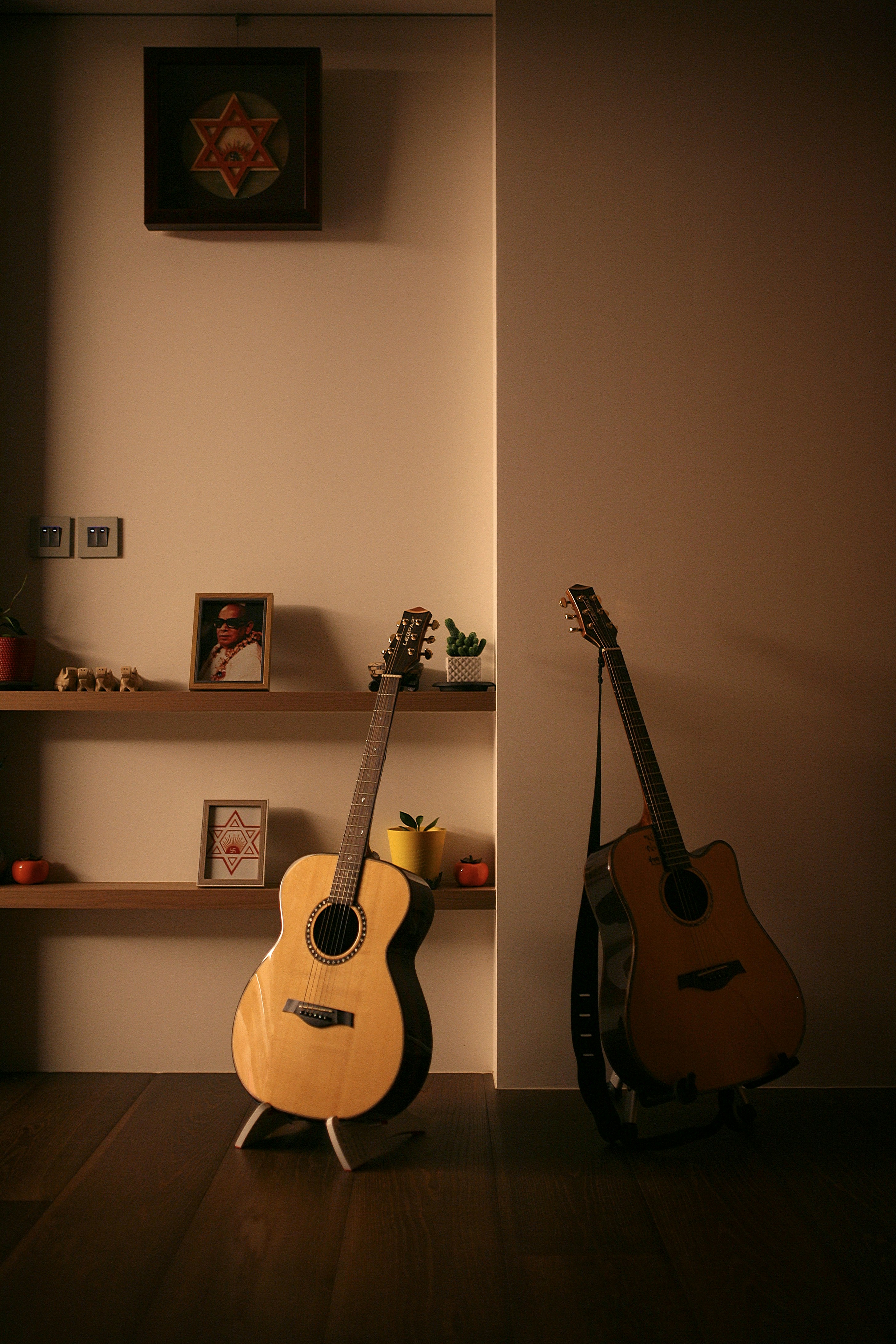
You can’t talk about guitars without talking about Europe. It’s like trying to discuss pizza without mentioning Italy—it just doesn’t work! The guitar’s very soul is woven into the fabric of European history, long before rock and roll ever kicked down the door.
The Spanish Cradle of the Guitar
Our story begins in Spain. Forget the screaming solos for a moment and picture a 16th-century Spanish court. The instrument of choice was the vihuela, a figure-8-shaped gut-stringed instrument. This was the direct ancestor of the guitar. Fast forward to the 19th century, and a Spanish luthier named Antonio de Torres Jurado changed everything. He’s basically the “father of the modern classical guitar.” He established the size, shape, and internal fan-bracing pattern that defines classical and flamenco guitars to this day. His work laid the foundation for legendary Spanish workshops that continue his legacy.
German Innovation and Precision
Let’s hop over to Germany, where a different kind of revolution was brewing. German luthiers, with their long history of violin making, brought a meticulous, engineering-focused approach to the craft. In the mid-20th century, brands like Höfner and Framus emerged. While American brands were conquering the world with solid-body electrics, Höfner created the 500/1 Violin Bass. It was lightweight, affordable, and had a unique thumpy tone. A young bassist in a Liverpool band called The Beatles picked one up, and the rest, as they say, is history. This legacy of precision engineering continues today with brands like Lakewood, Warwick, and Nik Huber, which we’ll explore in our Guitar Brand Guides.
The British Invasion and Boutique Builders
Across the channel, the UK was a hotbed of musical energy. While many British Invasion bands played American guitars, a homegrown industry was bubbling. Brands like Burns and Watkins (WEM) offered quirky, stylish alternatives. This spirit of independence later fueled the UK’s boutique scene, giving us modern powerhouses in pickups (Bare Knuckle), accessories (G7th Capos), and high-end guitars like Lowden and Chapman.
From the classical purity of Spain to the rock ‘n’ roll swagger of the UK, the history of European guitars is a rich tapestry of tradition and rebellion.
1️⃣ Top 15 European Guitar Brands You Need to Know
Okay, time for the main event! We’ve played, tested, and debated endlessly here at the Guitar Brands™ office to bring you our definitive list. This isn’t just a rundown of names; it’s a curated tour of the workshops and innovators shaping the sound of Europe. We’ve split them into electric and acoustic to keep things tidy.
Electric Guitar Innovators from Europe
These are the brands pushing the boundaries of what an electric guitar can be.
1. Mayones Guitars & Basses (Poland) 🇵🇱
- Known For: Modern metal machines with stunning exotic wood tops.
- Why We Love It: Playing a Mayones is an experience. The craftsmanship is flawless, and they have a tight, aggressive, yet articulate tone that’s perfect for modern genres. Our lead guitarist, Mike, swears his Regius 6 is the most stable guitar he’s ever owned, holding tune through brutal rhythm sessions and wild temperature changes.
- ✅ Pros: Impeccable build quality, incredible wood choices, powerful and clear tone.
- ❌ Cons: Premium price point, can be heavy depending on the model.
- Key Models: Regius, Duvell.
2. Vigier Guitars (France) 🇫🇷
- Known For: Technological innovation, particularly their 10/90 carbon-reinforced necks that don’t need a truss rod.
- Why We Love It: Patrice Vigier is a genius. The stability of these guitars is legendary. You can leave a Vigier in a car on a hot day (don’t!), and it will likely still be in tune. Their fretwork is immaculate, and the zero-fret design provides incredible consistency. They are instruments of pure performance.
- ✅ Pros: Unmatched neck stability, flawless playability, unique and reliable hardware.
- ❌ Cons: The modern aesthetic might not be for vintage purists.
- Key Models: Excalibur, Expert, Surfreter (fretless).
3. Strandberg Guitars (Sweden) 🇸🇪
- Known For: Headless, multi-scale, ergonomic designs that prioritize player comfort and health.
- Why We Love It: At first, they look… weird. Then you pick one up. The patented EndurNeck™ profile feels incredibly natural, and the lightweight, balanced design makes you wonder why all guitars aren’t made this way. Strandberg didn’t just change the look of the guitar; they changed how it feels to play for hours on end.
- ✅ Pros: Supremely comfortable and lightweight, innovative and ergonomic neck profile, excellent for technical players.
- ❌ Cons: The look is polarizing, and adjusting to a headless system takes a moment.
- Key Models: Boden, Sälen (their T-style).
4. Hagstrom (Sweden) 🇸🇪
- Known For: Retro-cool designs and ultra-fast, thin necks with their H-Expander™ truss rod.
- Why We Love It: Hagstrom offers a slice of vintage European style without the vintage price tag or reliability issues. Their necks are famously thin and comfortable, and the Resinator™ fretboard material is a unique, stable composite that feels great. They have a distinct vibe that stands out in a sea of clones.
- ✅ Pros: Great value, super-slim and stable necks, unique vintage aesthetic.
- ❌ Cons: Pickups on some lower-end models might be a candidate for an upgrade for discerning players.
- Key Models: Swede, Viking (semi-hollow).
5. Framus / Warwick (Germany) 🇩🇪
- Known For: Meticulous German engineering and the use of exotic and sustainable woods. (Framus for guitars, Warwick for basses).
- Why We Love It: Framus guitars, especially from their Teambuilt and Custom Shop lines, are masterpieces of precision. They offer a huge range of customization. The brand has a rich history (played by everyone from Bill Wyman to Devin Townsend) and has been reborn with an incredible focus on quality.
- ✅ Pros: World-class craftsmanship, massive customization options, sustainable wood sourcing.
- ❌ Cons: High-end models are a significant investment.
- Key Models: Diablo, Panthera, Idolmaker.
Acoustic Guitar Craftsmanship Across Europe
From the Emerald Isle to the heart of the continent, these brands define acoustic excellence.
6. Furch Guitars (Czech Republic) 🇨🇿
- Known For: Superb quality, innovative design, and a sound that punches way above its price point.
- Why We Love It: We have a running joke that Furch is the best-kept secret in the acoustic world, but the secret is out. Their color-coded series (Blue, Green, Yellow, Red, etc.) makes it easy to find your fit. The voicing process for each top results in a rich, balanced, and responsive tone that rivals brands costing twice as much. Their CNR System® neck design adds incredible stability.
- ✅ Pros: Exceptional value for money, consistent high quality, modern and clear tone.
- ❌ Cons: Can be harder to find in smaller local shops compared to major US brands.
- Key Models: Yellow Series, Blue Series, Vintage Series.
7. Lowden Guitars (Northern Ireland) 🇬🇧
- Known For: A unique, piano-like “Celtic” tone with incredible sustain and overtones.
- Why We Love It: Playing a Lowden is a spiritual experience. George Lowden’s designs, with their distinctive body shapes (like the ‘O’ and ‘F’ models) and hand-rubbed satin finishes, are works of art. They don’t sound like Martins or Taylors; they sound like Lowdens. The string-to-string separation is pristine, making them a fingerstyle player’s dream.
- ✅ Pros: Unique and beautiful tonal character, impeccable craftsmanship, a true “lifetime” instrument.
- ❌ Cons: Premium instruments with a corresponding price; the wider necks aren’t for everyone.
- Key Models: F-32, O-25, S-35.
8. Lakewood Guitars (Germany) 🇩🇪
- Known For: German precision applied to acoustic guitar building, resulting in clean, balanced, and articulate instruments.
- Why We Love It: If Furch is the passionate artist, Lakewood is the master engineer. The build quality is flawless. They have a very pure, modern sound that records beautifully. Their online guitar designer is also one of the best in the business, allowing you to spec out your dream guitar with incredible detail.
- ✅ Pros: Flawless construction, balanced and modern tone, extensive customization options.
- ❌ Cons: The sound can be a bit “polite” for players who want a gritty, vintage blues tone.
- Key Models: M-32, D-14, A-36.
9. Alhambra Guitars (Spain) 🇪🇸
- Known For: Being one of the world’s premier makers of high-quality Spanish classical and flamenco guitars.
- Why We Love It: If you want an authentic nylon-string guitar, you go to the source. Alhambra has been perfecting the art for over 50 years. From student models to concert-level instruments, they all possess that warm, percussive, and soulful Spanish sound. The feel of the cedar and spruce tops is just… right.
- ✅ Pros: Authentic Spanish sound and feel, excellent quality across all price points, a benchmark for classical guitars.
- ❌ Cons: Primarily focused on nylon-string guitars, so steel-string players must look elsewhere.
- Key Models: 4P (a classic student/intermediate model), Luthier Aniversario.
10. Faith Guitars (UK / Indonesia) 🇬🇧
- Known For: Designs by legendary British luthier Patrick James Eggle, offering all-solid wood construction at an accessible price.
- Why We Love It: Faith Guitars hit a sweet spot in the market. You get the design expertise of a master luthier with high-quality, all-solid tonewoods, built in a world-class Indonesian workshop to keep them affordable. The result is a range of guitars that consistently outperform their price tags.
- ✅ Pros: All-solid wood construction is standard, designed by a renowned luthier, fantastic value.
- ❌ Cons: Not made in Europe (designed in the UK), which might matter to some purists.
- Key Models: Venus (OM/Auditorium), Neptune (Baby Jumbo).
(This list continues with brands like Paoletti, Nik Huber, Sandberg, Warwick, and Vintage in the following sections!)
2️⃣ Best Budget-Friendly European Guitar Brands for Beginners
“European guitar” and “budget-friendly” might sound like they belong in different sentences, but you’d be surprised! You don’t need to sell a kidney to get a slice of that continental quality. For anyone starting out or just looking for a great value instrument, these brands are your ticket. This is a key part of our Guitar Buying Guide.
Vintage Guitars (UK) 🇬🇧
Designed in the UK by the legendary Trevor Wilkinson, Vintage guitars are the undisputed kings of “bang for your buck.” They take classic American designs and elevate them with Wilkinson’s excellent, proprietary hardware and pickups.
- Why they’re great for beginners: Their V6 (S-style) and V100 (LP-style) models feel and sound shockingly good for the price. You get a properly set-up, reliable instrument that you won’t have to fight to play, which is crucial when you’re learning.
- Check out: The Vintage V100 is often hailed as one of the best single-cut guitars at its price point.
Ortega Guitars (Germany) 🇩🇪
While Alhambra rules the traditional Spanish roost, Germany’s Ortega has carved out a fantastic niche in the nylon-string and acoustic world. They offer a huge range of instruments, from traditional classicals to modern thin-line models with electronics, and even ukuleles and mandolins.
- Why they’re great for beginners: Their “Family Series” is specifically designed for students, offering features like slimmer necks and various scale lengths to fit players of all ages and sizes. The quality control is excellent.
- Check out: The Ortega R122 is a fantastic starting point for anyone curious about classical guitar.
Furch’s Blue Series (Czech Republic) 🇨🇿
Okay, so Furch is on our main list, but their entry-level Blue Series deserves a special mention here. These are all-solid wood guitars! Getting a solid cedar or spruce top and solid mahogany back and sides from a European maker at this price is almost unheard of.
- Why they’re great for beginners: It’s an instrument you can grow with for years. The sound quality is so good that it will inspire you to play more. It’s a true investment in your musical journey.
- Check out: The Furch Blue CM (Cedar/Mahogany) is warm, responsive, and a joy to play.
Budget European Brand Comparison
| Brand | Country of Origin/Design | Specialty | Ideal For… |
|---|---|---|---|
| Vintage | United Kingdom | Electric guitars with classic designs | The beginner who wants a reliable Strat or Les Paul style guitar. |
| Ortega | Germany | Nylon-string & acoustic instruments | The aspiring classical player or someone wanting a quality, easy-to-play nylon. |
| Furch (Blue Series) | Czech Republic | All-solid wood acoustic guitars | The serious beginner who wants a high-quality first instrument to last a lifetime. |
3️⃣ Premium and Luxury European Guitar Brands: Where Art Meets Sound
Now we’re entering the realm of “grail guitars.” These are instruments where the line between tool and art becomes beautifully blurred. These luthiers are the watchmakers and supercar engineers of the guitar world, and owning one is a statement.
Nik Huber Guitars (Germany) 🇩🇪
If Porsche made guitars, they would be Nik Huber guitars. Located just outside Frankfurt, Nik and his small team create instruments with a level of fit, finish, and feel that is simply breathtaking.
- What You’re Paying For: The precision is surgical. The finishes, especially their semi-gloss and open-pore options, feel organic and alive. Nik Huber personally selects the wood, and his designs, like the Dolphin and the Orca, are elegant, ergonomic evolutions of classic shapes. Playing one feels like driving a finely tuned sports car.
- Find them here: Nik Huber Guitars Official Site
Paoletti Guitars (Italy) 🇮🇹
Here’s a story for you. Fabrizio Paoletti’s family has a 130-year-old stock of chestnut wine barrels from his great-grandfather’s vineyard. He now uses this ancient, character-filled wood to create some of the most unique guitars on the planet.
- What You’re Paying For: You’re literally buying a piece of Italian history. The reclaimed chestnut gives these guitars a resonance and voice unlike anything else—it’s punchy, warm, and incredibly dynamic. Combined with hand-wound pickups and stunning aesthetic touches like brass pickguards, a Paoletti is pure passion.
- Find them here: Paoletti Guitars Official Site
Ruokangas Guitars (Finland) 🇫🇮
Juha Ruokangas is a luthier’s luthier. His philosophy is rooted in blending traditional Finnish woodworking with innovative design. He’s known for using materials like Spanish Cedar for necks and his unique “Valvebucker” tube-powered onboard preamp system.
- What You’re Paying For: Uncompromising vision. Juha’s guitars (like the Duke, Unicorn, and Mojo) are his interpretation of what a guitar should be. The feel is sublime, the materials are second-to-none, and the tonal options are vast. A Ruokangas is for the player who values artistry and innovation in equal measure.
- Find them here: Ruokangas Guitars Official Site
These instruments aren’t just tools for making music; they are sources of inspiration in themselves. They represent the pinnacle of European craftsmanship and are a highlight of our Guitar Brands Showcase.
🎨 Unique Body Styles and Designs in European Guitars
Tired of the same old S-style, T-style, and single-cut shapes? European builders are your antidote to conformity! They are famously unafraid to rethink the guitar from the ground up, prioritizing ergonomics, balance, and bold aesthetics.
The Ergonomic Revolution: Strandberg
We mentioned them before, but it’s impossible to discuss unique design without circling back to Strandberg.
- The Design: Headless construction, multi-scale frets (fanned frets), and the patented EndurNeck™.
- The Philosophy: Ola Strandberg’s goal was to create a guitar that felt like an extension of the body. The headless design removes the neck dive common in some guitars. The multi-scale lengths provide more tension on the low strings (for clarity) and less on the high strings (for easy bending). The EndurNeck™ profile, with its flat surfaces, supports a more relaxed hand position. It’s pure, player-focused science.
The Headless Pioneer: Vigier
Before Strandberg, there was Vigier. They’ve been champions of headless design for decades.
- The Design: While they make traditional headstock guitars, their headless models are iconic. They often feature their proprietary non-locking tremolo systems that pivot on needle bearings for incredibly smooth action and tuning stability.
- The Philosophy: Performance and reliability. A headless Vigier is a compact, balanced, and ridiculously stable tool for the modern musician who can’t afford to go out of tune.
The Violin Icon: Höfner
You can’t miss it. The Höfner 500/1 Violin Bass is one of the most recognizable instruments in the world.
- The Design: A fully hollow, violin-shaped body with a short scale length.
- The Philosophy: Originally designed in 1956, it was meant to be an easily portable, lightweight bass that drew on Germany’s long history of violin making. Its hollow construction and short scale give it a deep, woody, and percussive “thump” that a solid-body bass just can’t replicate. It’s a happy accident of history that became the sound of the ’60s.
Design Comparison: European Innovation vs. American Classic
| Feature | Strandberg Boden (Sweden) | Fender Stratocaster (USA) |
|---|---|---|
| Headstock | None (Headless) | Standard, large headstock |
| Body | Small, chambered, ergonomic cutaways | Contoured solid body |
| Neck Profile | EndurNeck™ (Asymmetrical/Trapezoidal) | “C”, “V”, or “U” shape (Rounded) |
| Frets | Multi-scale (Fanned) | Parallel (Standard) |
| Design Goal | Player comfort, balance, modern tone | Versatility, classic tone, mass production |
🎵 European Bass Guitar Brands That Rock the Low End
Let’s talk about the low end, because Europe is an absolute powerhouse in the world of Bass Guitars. German manufacturers, in particular, have a reputation for creating some of the most revered and sought-after basses on the market.
Warwick (Germany) 🇩🇪
If you’ve ever heard a bass that “growls,” chances are it was a Warwick. Founded in 1982 by Hans-Peter Wilfer, Warwick basses are famous for their use of exotic tonewoods (like Bubinga, Wenge, and Ovangkol), unique body shapes, and that signature aggressive tone.
- Why We Love Them: The feel of a Warwick is unmistakable. The chunky necks (though slimmer options are available), the natural oil finishes, and the sheer sonic punch are addictive. They are built like tanks and have a sound that can cut through any mix.
- Key Models: The Streamer, the Thumb (a truly unique and iconic design), and the Corvette.
- Check them out: Warwick Official Site
Sandberg Guitars (Germany) 🇩🇪
While Warwick is known for its aggressive modern tone, Sandberg offers a brilliant fusion of classic design and modern precision. Holger Stonjek and his team build basses that feel familiar but are refined to perfection.
- Why We Love Them: Sandberg takes J-style and P-style basses and elevates them with features like incredible fretwork, versatile preamps, and a brilliant “ageing” process for their relic’d finishes that feels authentic. They offer the comfort of a classic with the reliability of a modern boutique instrument.
- Key Models: The California Series (their J and P-style basses), and the Forty Eight.
- Check them out: Sandberg Guitars Official Site
Marleaux BassGuitars (Germany) 🇩🇪
For the connoisseur bassist, there is Marleaux. Gerald Marleaux is a master luthier creating high-end, artistic basses in the Harz mountains of Germany.
- Why We Love Them: These are functional works of art. Marleaux is known for its beautiful single-cut designs, use of stunning figured woods, and innovative electronics. The playability is effortless, and the tone is exceptionally clear and nuanced. A Marleaux is a lifetime instrument for the discerning player.
- Key Models: The Consat, the Votan, and the jaw-dropping Diva.
- Check them out: Marleaux BassGuitars Official Site
🔧 Craftsmanship Secrets: What Makes European Guitars Stand Out?
So, what’s the secret sauce? Why do these guitars have such distinct personalities? It’s not one single thing, but a combination of philosophy, materials, and technique. Let’s peek behind the curtain.
The Magic of European Tonewoods
While North American builders have historically relied on Sitka Spruce, Rosewood, and Mahogany, European luthiers have a different spice rack.
- Alpine Spruce: Sourced from the high altitudes of the Alps, this wood (also called Italian or German Spruce) is known for its stiffness and lightness. According to wood-database.com, this combination results in a quick attack, rich complexity, and high headroom, making it a favorite for high-end acoustic tops at Lakewood and Furch.
- Cedar: Spanish builders like Alhambra have perfected the use of Red Cedar for their classical tops, providing a warmth and responsiveness from the very first strum that takes spruce years to develop.
- Local & Reclaimed Woods: The sustainability movement has pushed builders to look in their own backyards. You’ll find Furch using European Walnut, Lakewood using Plumwood, and of course, Paoletti using that incredible reclaimed Chestnut. These woods offer unique tonal palettes you won’t find anywhere else.
Hand-Voicing and Tap Tuning
This is where art meets science. Many high-end European acoustic builders, like Lowden and Furch, don’t just assemble guitars; they voice them. This involves meticulously sanding and shaping the top and braces, tap-testing them along the way to hear their resonant frequency. The goal is to optimize the wood’s potential, ensuring the guitar is as responsive and tonally rich as it can possibly be. It’s a time-consuming process that mass-production lines simply can’t replicate.
Innovative Hardware and Electronics
European brands are not afraid to engineer their own solutions.
- Vigier’s 10/90 Neck System: Instead of a traditional adjustable truss rod, Vigier embeds a strip of carbon fiber in the neck. This makes the neck incredibly rigid and stable, immune to changes in humidity and temperature.
- Warwick’s Just-A-Nut: Their adjustable brass nuts allow for incredibly precise setup and action adjustments right at the headstock.
- Bare Knuckle Pickups (UK): While not a guitar brand, BKP has become the go-to for many European builders and players. Their hand-wound pickups are revered for their clarity, dynamics, and character, offering a huge range of vintage and modern tones.
🎤 Famous European Guitarists and Their Signature Models
A great guitar is nothing without a great player to give it a voice. Many of Europe’s finest players champion their homegrown brands, resulting in some killer signature models.
-
Rabea Massaad (UK) & Chapman Guitars: Rabea is a modern guitar hero known for his massive riffs and ambient textures. His signature models with Chapman Guitars (a UK brand) are built for versatility, often featuring his signature Bare Knuckle “Silo” pickups and ergonomic, modern designs. They are a perfect reflection of his playing style.
-
Guthrie Govan (UK) & Vigier: For many years, the formidable Guthrie Govan was synonymous with Vigier. His signature model was a masterclass in performance-focused design, featuring a non-locking tremolo, HSH pickup configuration, and that famously stable neck. It was the perfect tool for his mind-bending technicality. (He has since moved to Charvel, but his Vigier era was legendary).
-
Mikael Åkerfeldt (Sweden) & PRS: Okay, a bit of a cheat as PRS is American, but the frontman of Swedish prog-metal giants Opeth is a key European artist. His signature PRS SE model is a great example of an artist-driven design, featuring a satin finish, jumbo frets, and unique bird inlays, tailored for heavy, intricate music. This shows how European artist preferences can influence even major American brands.
-
Paul McCartney (UK) & Höfner: The most famous pairing of all. McCartney’s use of the Höfner 500/1 Violin Bass wasn’t just a choice; it defined the look and sound of The Beatles and generations of bassists to come. Its lightweight, symmetrical design appealed to the left-handed McCartney, and its unique tone became an integral part of their sound.
🌍 Sustainability and Eco-Friendly Practices in European Guitar Manufacturing
In a world increasingly conscious of its environmental footprint, the guitar industry is no exception. Many European brands are leading the charge in sustainable and ethical manufacturing. This isn’t just a trend; for many, it’s a core part of their philosophy.
Leading the Way in Green Building
- Furch Guitars (Czech Republic): Furch has a deep commitment to the environment. They have developed their own UV finishing process that is over 90% more environmentally friendly than traditional lacquer finishes. They also actively research and utilize non-exotic, sustainable tonewoods.
- Lakewood Guitars (Germany): Lakewood has a long-standing commitment to using FSC-certified woods and sourcing locally whenever possible. Their website proudly details their use of European woods like ovangkol, walnut, and cherry, reducing the reliance on traditionally-harvested and often endangered tropical woods.
- Paoletti Guitars (Italy): The ultimate in upcycling! As we mentioned, Paoletti’s use of 130-150 year-old reclaimed chestnut from wine barrels is the definition of sustainability. It gives new life to beautiful, historic wood that would otherwise be lost.
Why It Matters to You
✅ A Clear Conscience: Knowing your instrument was built with respect for the environment adds another layer of enjoyment to owning it.
✅ Unique Tones: The use of alternative and local woods opens up a whole new sonic vocabulary. A guitar made of European Walnut doesn’t sound like one made of Indian Rosewood—it has its own unique character.
✅ Supporting Innovation: By choosing brands that prioritize sustainability, you’re supporting a healthier future for the entire industry.
🎸 Custom and Boutique European Guitar Builders You Should Explore
Beyond the well-known brands lies a vibrant world of small-shop and one-person luthiers. This is where you go when you want something truly unique, built to your exact specifications. It’s a journey, but the result is an instrument that is unequivocally yours.
- Ulrich Teuffel (Germany): Teuffel is more of a sculptor who works in the medium of guitars. His designs, like the Birdfish and the Tesla, are radical, futuristic, and sonically brilliant. They challenge the very notion of what a guitar should look like. An instrument from Teuffel is a collector’s piece and a player’s tool in one.
- Seth Baccus Guitars (UK): Based in Portugal but hailing from the UK, Seth Baccus builds stunningly beautiful guitars that blend vintage soul with modern playability. As the stepson of legendary luthier Andy Manson, he grew up surrounded by the craft. His Nautilus model is a gorgeous take on the classic single-cut design.
- Pagelli Guitars (Switzerland): Claudio and Claudia Pagelli create instruments that are pure art. Their work is often featured in museums. They are known for their flowing, art-deco-inspired archtops and wild electric designs. Commissioning a Pagelli is like commissioning a fine sculpture that also happens to sound incredible.
Exploring these builders is a deep dive, but it’s where you’ll find the cutting edge of lutherie.
🎧 Amplifiers and Effects: European Brands Complementing Your Guitar
Your guitar is only half the equation. The right amplifier and effects are crucial to bringing its voice to life. And just like with guitars, Europe has a legendary history of tone-shaping titans.
The British Amp Invasion
You can’t talk about rock tone without mentioning the UK.
- Marshall: The sound of rock. From the JTM45 to the JCM800 and the Plexi, Marshall amps have provided the crunch, roar, and scream for countless guitar heroes. Pairing a Les Paul-style guitar like a Vintage V100 or a Framus Panthera with a Marshall is a rite of passage.
- Orange: The other iconic British sound. Known for their fuzzy, thick, and powerful tone, Orange amps have a character all their own. They are perfect for stoner rock, doom, and any genre that requires a wall of sound.
- Vox: The jangle and chime of the ’60s. The Vox AC30 is famous for its complex, sparkling clean tones and rich, creamy overdrive. It’s the perfect partner for a semi-hollow guitar like a Hagstrom Viking or a Gretsch (though not European, a classic pairing!).
German Engineering and Scandinavian Precision
- Hughes & Kettner (Germany): Known for their feature-packed, versatile amps with that signature blue glow. From the TubeMeister to the TriAmp, H&K offers precision-engineered tones for every situation.
- Darkglass Electronics (Finland): The undisputed modern king of bass tone. Darkglass pedals and amps have defined the sound of modern metal and progressive bass playing with their aggressive, clear, and cutting distortion.
- Carl Martin (Denmark): A long-standing favorite for high-quality effects pedals. Known for their pro-level build quality and fantastic sound, from the PlexiTone pedal to their classic compressors and delays.
🛠️ Maintenance Tips and Support for European Guitars
Owning a fine European instrument is a joy, and with a little care, it will last a lifetime. While most maintenance is universal, some brands have unique features to be aware of.
-
Caring for Oil Finishes: Many German brands, like Warwick and some Framus models, use natural oil or wax finishes instead of thick polyurethane.
- DO: Clean with a dry, soft cloth after playing. Periodically re-apply the manufacturer’s recommended wax (e.g., Warwick’s Surface Finisher Beeswax) to nourish the wood and protect it from drying out.
- DON’T: Use abrasive polishes or silicone-based cleaners, as they can damage the finish and the wood.
-
Understanding Unique Hardware:
- Vigier 10/90 Necks: The best part? You do nothing! There is no truss rod to adjust. Your action is adjusted at the bridge and nut, but the neck relief is set for life. It’s brilliantly simple.
- Strandberg Headless Systems: Learning to change strings is slightly different but easy. You’ll need an Allen key. The string is locked at the “headstock” end and tuned at the bridge. It’s fast and stable once you do it once or twice.
-
Finding Support: One common concern is getting parts or service outside of Europe.
- ✅ Most major European brands have excellent dealer networks in North America and worldwide. Your local dealer is your first point of contact.
- ✅ Brands like Furch, Mayones, and Warwick have dedicated US-based distribution and support centers, making it easy to get help.
- ✅ For boutique brands, you’ll often be communicating directly with the builder or their small team, offering a highly personal level of support.
💡 Insider Buying Guide: How to Choose the Perfect European Guitar for You
Feeling inspired? Overwhelmed? Let’s break it down. Choosing the right guitar is a personal journey, but we can give you a map. This is the core of our Guitar Buying Guide philosophy.
Step 1: Define Your Sound and Style
- What music do you play? If you’re into modern metal, a Mayones or Strandberg is a natural fit. If you’re a fingerstyle acoustic player, a Lowden or Furch will sing for you. If you’re playing classic rock, a Vintage or Hagstrom will get you there.
- What do you value most? Is it raw performance and stability (Vigier)? Is it traditional craftsmanship and tone (Alhambra)? Is it artistic expression and unique materials (Paoletti)?
Step 2: Set Your Budget (Realistically)
- Entry-Level / Great Value (€): Look at Vintage, Ortega, and Faith. You’ll get a fantastic instrument that plays well above its price tag.
- Mid-Range / Pro-Level (€€): This is the sweet spot for brands like Furch, Hagstrom, and the German-made “Teambuilt” lines from Warwick/Framus. The quality here is exceptional.
- Premium / Boutique (€€€): This is the world of Lowden, Nik Huber, Mayones, and Vigier. These are lifetime investments in tone and craftsmanship.
Step 3: Research Brands by Country (A Fun Shortcut)
- For Precision Engineering: Look to Germany (Lakewood, Warwick, Sandberg, Nik Huber).
- For Modern Metal & Innovation: Look to Poland (Mayones) and Sweden (Strandberg, Hagstrom).
- For Acoustic Soul: Look to the Czech Republic (Furch), Northern Ireland (Lowden), and Spain (Alhambra).
- For Passion and Flair: Look to Italy (Paoletti) and France (Vigier).
Step 4: Where to Buy
- Local Dealers: The best option. You can play the actual instrument before you buy it. Nothing beats feeling the neck and hearing the guitar in person.
- Online Retailers: Reputable online stores like Thomann (based in Germany) have a massive selection of European brands and are a great resource.
- Direct from the Builder: For custom and boutique brands, you’ll often work directly with the luthier. This is a highly rewarding, personal experience.
🎁 Accessories and Add-ons from European Brands to Enhance Your Playing
The perfect setup doesn’t end with the guitar and amp. Europe is also home to some of the best accessory makers in the world. Upgrading these small components can have a huge impact on your tone and playing experience.
-
Pickups: Bare Knuckle Pickups (UK)
- Hand-wound in the UK, Bare Knuckle has become the gold standard for boutique pickups. Whether you want vintage PAF tones (The Mule) or brutal modern metal aggression (Ragnarok), they have something that will transform your guitar.
-
Strings: Rotosound (UK)
- A true heritage brand. Rotosound strings have been used by legends like Jimi Hendrix, John Entwistle, and Geddy Lee. Their Swing Bass 66 are arguably the most famous bass strings ever made, and their electric and acoustic strings are equally top-notch.
-
Capos: G7th (UK)
- Who knew a capo could be a piece of art? G7th re-engineered the capo to be better for your guitar and your tuning. Their Performance series capos apply even pressure, keeping your guitar in tune without damaging your neck or frets.
-
Straps: Richter (Germany)
- A high-quality guitar deserves a high-quality strap. Richter makes some of the most comfortable and durable leather straps on the market, used by pros worldwide.
📚 Recommended Links for Exploring European Guitar Brands Further
- Guitar Brands Showcase: Dive deeper into individual brands with our detailed showcases.
- Guitar Buying Guide: Get more tips and tricks for choosing your next instrument.
- Acoustic Guitars: Explore our dedicated section for all things acoustic.
- Bass Guitars: For the low-end lovers, this is your home.
- Thomann’s Guitar & Bass Page: A great place to browse a huge inventory of European brands.
🔗 Reference Links and Sources
- History of the Vihuela: The Metropolitan Museum of Art. Link
- Antonio de Torres Jurado, Luthier: “Antonio de Torres, Guitar Maker: His Life and Work” by José L. Romanillos.
- European Spruce Tonewood Properties: The Wood Database. Link
- Furch Guitars’ Eco-Friendly Finishing Process: Furch Guitars Official Website. Link
- Vigier 10/90 Neck System: Vigier Guitars Official Website. Link
🏁 Conclusion: Why European Guitar Brands Deserve Your Attention
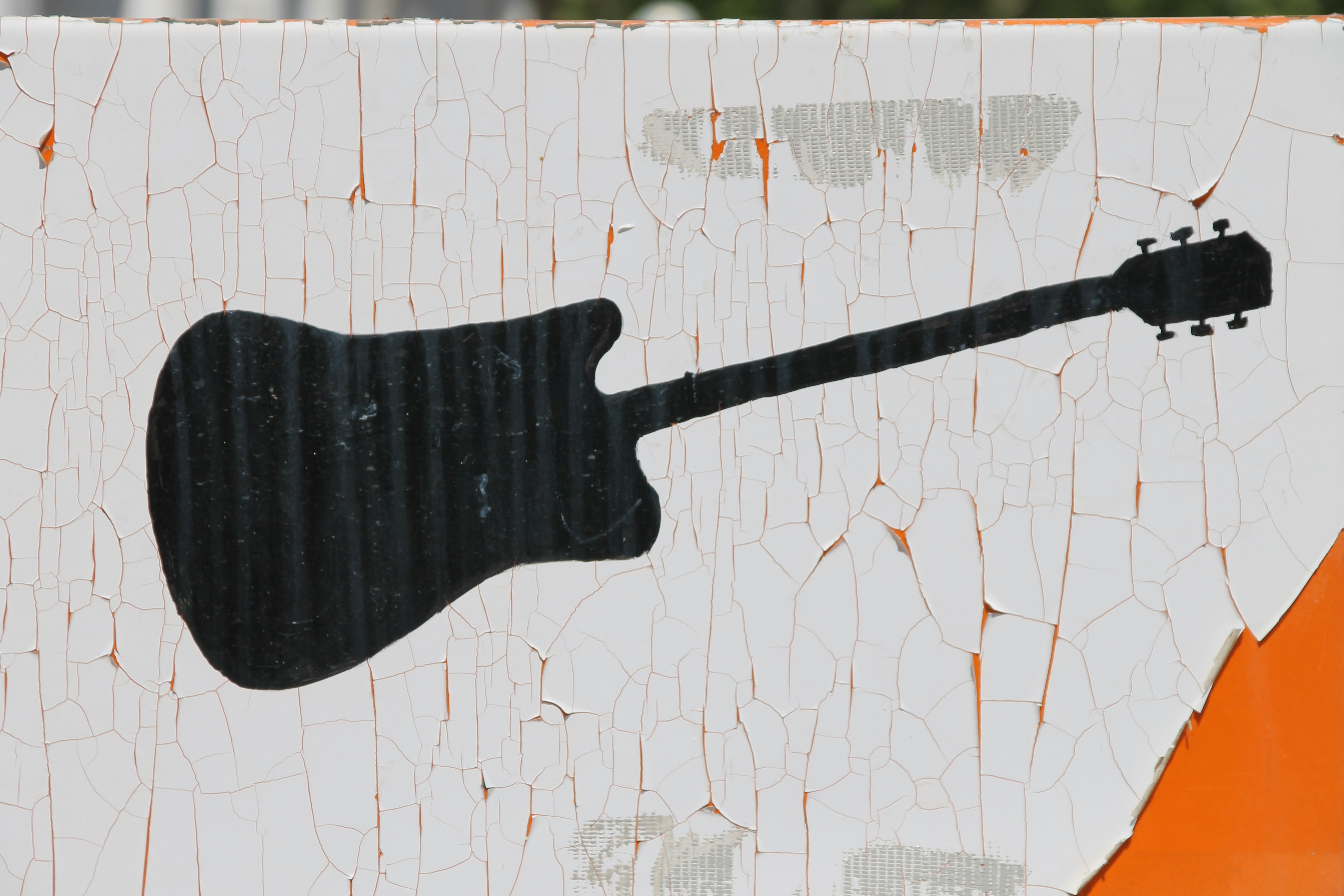
So, what’s the final chord in our symphony of European guitar brands? If you’ve been wondering whether these guitars are just “alternative” options or if they truly bring something special to the table, we hope we’ve struck the right note. From the innovative designs of Strandberg and Vigier to the timeless craftsmanship of Lowden and Alhambra, European guitars offer a rich diversity of tone, style, and heritage that’s hard to match.
Positives:
- Unmatched craftsmanship and innovation: Whether it’s carbon fiber necks or reclaimed chestnut wood, European brands are pushing boundaries.
- Wide price range: From budget-friendly Vintage and Ortega models to luxury Nik Huber and Paoletti masterpieces, there’s something for every player.
- Unique tonal palettes: Thanks to local tonewoods and voicing techniques, European guitars often have a distinct voice that stands apart from American or Asian counterparts.
- Sustainability leadership: Many brands are leading the way in eco-friendly manufacturing, giving you a guitar you can feel good about owning.
Negatives:
- Availability: Some boutique and custom brands can be hard to find outside Europe, requiring patience or direct ordering.
- Price: Premium models can be a significant investment, though the quality and longevity justify the cost.
- Design quirks: Some innovative designs (headless, multi-scale) may require an adjustment period for players used to traditional shapes.
Our confident recommendation? If you’re looking for a guitar that combines heritage, innovation, and exceptional playability, European brands deserve a serious look. Whether you’re a beginner seeking value or a pro chasing your dream instrument, Europe’s guitar makers have you covered.
Remember that question we teased earlier — why do guitars from the Czech Republic or Sweden feel so different? It’s the perfect storm of local materials, centuries of craftsmanship, and fearless innovation. Now you know the story behind the sound.
Ready to explore? Check out our Guitar Brands Showcase for deep dives on your favorites, and happy playing! 🎸✨
📚 Recommended Links for Shopping and Learning
Shop European Guitar Brands
- Mayones Guitars & Basses on Amazon
- Vigier Guitars Official Site
- Strandberg Guitars Official Site
- Höfner Guitars Official Site
- Framus Guitars Official Site
- Furch Guitars Official Site
- Lowden Guitars Official Site
- Lakewood Guitars Official Site
- Alhambra Guitars Official Site
- Faith Guitars Official Site
- Nik Huber Guitars Official Site
- Paoletti Guitars Official Site
- Ruokangas Guitars Official Site
- Warwick Basses Official Site
- Sandberg Guitars Official Site
- Marleaux BassGuitars Official Site
Recommended Books on European Guitar Craftsmanship and History
- Antonio de Torres, Guitar Maker: His Life and Work by José L. Romanillos — Amazon Link
- The Guitar Handbook by Ralph Denyer — Amazon Link
- European Guitar Makers: A History (various authors) — Check local libraries or specialty bookstores for in-depth regional histories.
❓ Frequently Asked Questions About European Guitar Brands
What are the most popular European guitar brands for beginners?
For beginners, Vintage (UK) and Ortega (Germany) are the go-to brands. Vintage offers affordable, well-built electric guitars modeled on classic American designs but with superior hardware, making them perfect for new players who want reliability without breaking the bank. Ortega specializes in nylon-string classical and acoustic guitars with student-friendly features like slimmer necks and smaller body sizes. Additionally, Furch’s Blue Series from the Czech Republic offers all-solid wood acoustics that provide excellent tone and durability for beginners who want an instrument to grow with them.
Are European guitar brands more expensive than American or Asian brands?
It depends. Europe is home to both budget-friendly brands like Vintage and Ortega, which compete well with Asian-made guitars on price and quality, and high-end boutique builders like Nik Huber and Paoletti, whose instruments command premium prices due to craftsmanship and unique materials. Compared to American brands, European guitars often offer better value at mid-range price points because of their focus on quality and innovation. However, luxury European guitars can be more expensive due to handcrafting and limited production runs.
Which European country is known for producing the best acoustic guitars?
While several countries excel, the Czech Republic (Furch Guitars) and Northern Ireland (Lowden Guitars) are widely regarded for their exceptional acoustic guitars. Furch combines modern voicing techniques with sustainable European tonewoods, producing balanced, articulate instruments. Lowden’s guitars are celebrated for their unique tonal character, sustain, and fingerstyle-friendly playability. Spain, of course, is the historic home of classical and flamenco guitars, with brands like Alhambra leading the way in nylon-string craftsmanship.
Do European guitar brands offer a unique sound or playability compared to other brands?
Absolutely! European guitars often feature distinct tonewoods, such as Alpine Spruce, European Walnut, and reclaimed chestnut, which impart unique tonal colors not commonly found in American or Asian guitars. Moreover, many European builders emphasize innovative neck designs, ergonomic body shapes, and advanced construction techniques (like Vigier’s carbon fiber necks or Strandberg’s headless multi-scale designs) that enhance playability and tuning stability. This combination results in instruments that not only sound different but feel different to play—often described as more “organic,” “balanced,” or “responsive.”
How do European guitar brands approach sustainability?
Many European brands are pioneers in sustainable guitar manufacturing. They prioritize locally sourced and FSC-certified woods, use eco-friendly finishing processes (like Furch’s UV finishes), and creatively repurpose reclaimed materials (Paoletti’s chestnut wine barrels). This commitment reduces environmental impact while offering players instruments with unique stories and tonal qualities. Supporting these brands means supporting a greener future for music.
Are European guitars easy to find outside Europe?
While major brands like Warwick, Höfner, and Vintage have strong international distribution, boutique and custom European guitars can be harder to find outside Europe. However, many brands have established dealer networks in North America, Asia, and Australia, and online retailers like Thomann offer extensive selections. For custom builders, direct ordering is common and often comes with personalized support.
🔗 Reference Links and Sources
- Metropolitan Museum of Art – History of the Vihuela: https://www.metmuseum.org/art/collection/search/501881
- Antonio de Torres Jurado Biography and Work: José L. Romanillos, Antonio de Torres, Guitar Maker
- The Wood Database – Alpine Spruce Properties: https://www.wood-database.com/norway-spruce/
- Furch Guitars Eco-Friendly Finish Announcement: https://furchguitars.com/us/ecological-surface-coating/
- Vigier Guitars 10/90 Neck System: https://www.vigierguitars.com/fo2/viewtopic.php?t=3967
- Best Budget Guitar Brands in Europe – The Acoustic Guitar Forum: https://www.acousticguitarforum.com/forums/showthread.php?t=423628
We hope this guide has been your perfect companion to exploring the vibrant world of European guitar brands. Whether you’re chasing that perfect tone, a unique design, or a sustainable instrument with a story, Europe has a guitar waiting for you. 🎸🌍
